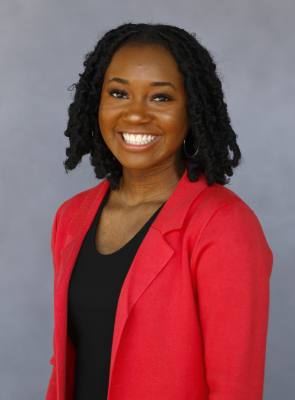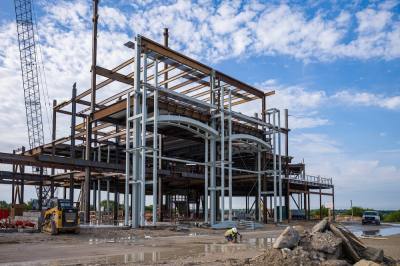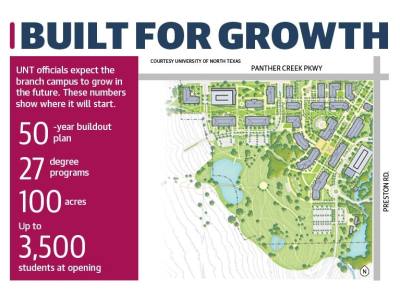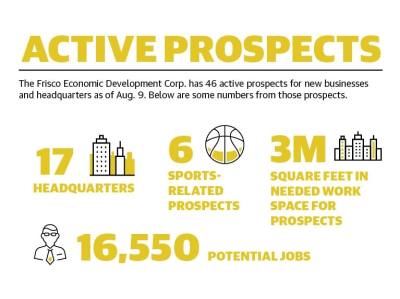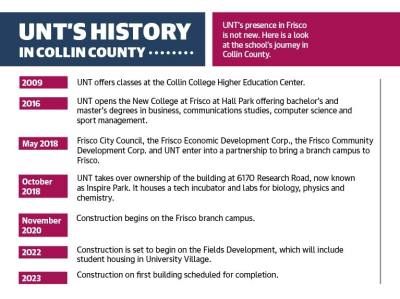When the University of North Texas at Frisco campus opens in the spring of 2023, it will be home to the university’s Bachelor of Science in Project Design and Analysis.
The program, which launched in 2019 at Hall Park, will be a highlight for the 100-acre branch campus that UNT is building at the southwest corner of Panther Creek Parkway and Preston Road. UNT has the option of purchasing another 50 acres to add to current land gifted by the city of Frisco. Once construction ends on the first building, the Project Design and Analysis degree will be one of about 27 undergraduate and master’s level programs at the campus.
A pioneering program
UNT faculty have been intentional about programs, like the Project Design and Analysis degree, that will set the Frisco campus apart from its main Denton campus. While UNT has offered classes at Hall Park for more than five years and Inspire Park for nearly three, city officials say that the branch campus will provide a greater boost to economic development.
This prediction about Frisco’s growth is due, in part, to the fact that the degree program requires cohorts to work with industry partners, which are organizations that range from Fortune 500 companies to local nonprofits. Throughout the program, students work to solve problems presented by the partners. Problems might be related to user experience, product design or branding.
“There’s a ton of benefits for these project partners, not the least of which is that they get to be industry leaders,” said Cassini Nazir, program director for the Project Design and Analysis program. “They’re shaping the future workforce.”
Nazir teaches two courses: design thinking and interaction design. Nazir said the structure of the program gives graduates a competitive edge because of its focus areas.
Designers usually lack data analysis skills, Nazir said. However, students in the program answer questions about return on investment and the quantitative effects of their projects.
“If you understand the analysis portion of your job ... It’s going to help you to talk to business leaders in the language that they understand,” Nazir said. “And then it’s also going to help you to negotiate your salaries.”
In addition to gaining experience during the school year, students must complete three internships to graduate. Most choose to intern during the summer, but some work during the fall and spring semesters.
This fall, there are three cohorts, and each will work with a different partner. One will be Sam’s Club. City House, a nonprofit that serves at-risk individuals experiencing homelessness and/or abuse, is also a partner.
The last cohort will work with the branch campus’ marketing coordinator on an internal project, which is something new that the program is launching this year. Previous cohorts have worked with the city of Frisco and the Frisco Chamber of Commerce.
Nazir said that an internal project will allow students to learn in a supportive environment.
“Every one of our partners is committed to student success, but if a student makes a mistake on the Sam’s Club project, and then they apply to an internship or position that then becomes available, [Sam’s] may think twice about that,” Nazir said. “The goal is to set them up for success.”
Faculty ask potential partners a series of questions to determine whether they are a good fit for the program. Nazir said one question could be if the project matches what students are learning in this program. For project management, how will students meet objectives at a predetermined schedule? For design, how do they define new processes or innovate old ones?
Although the new, internal UNT project is designed to be a safe space for students, Nazir said honest feedback from industry partners is critical to everyone’s success.
“We do not want project partners to come in and just praise our students,” he said. “We teach [students] the two magic words whenever somebody tells you how your work can improve: thank you.”
The Applied Project Design and Analysis degree, which is an equivalent to the Project Design and Analysis program for transfer students, will be available in the fall of 2022.
An interactive campus
The Frisco branch campus will include free lodging spaces and conference rooms for industry partners. There will also be hubs for advising and enrollment, financial aid and other student services.
Faculty offices will be integrated throughout the academic buildings. Wesley Randall, dean of the New College at Frisco, said this design is supposed to encourage accessibility to students. Instructors will also cruise hallways with signs on the back of their laptops that say “ask me for help in” the subject they teach.
“It is a space that’s designed to be authentic to who we are and to help inspire the students,” Randall said. “We did not go doubling down on any kind of tech. I come out of aerospace and defense, but I am remarkably against hemorrhaging money on technology. That’s not what we need to do. We need to interact with our students.”
UNT will not have dorms at its Frisco location. Directly north of the campus, the Fields development is set to start construction in 2022 and will have designated student housing in its community called University Village.
Randall said many of UNT’s Frisco-based students are adult learners. That demographic, coupled with the pipeline of students from Collin College who have their own housing, influenced the decision to omit dorms.
“We have a massive, Tier One, 40,000-student research university 40 minutes, 24 miles away,” Randall said. “If a student is looking for housing, football and all of that, we’ll just take them to Denton.”
However, the dean emphasized that he did not want Frisco students commuting back and forth from Denton.
University staff spent time ensuring that high-demand degrees offered at the Frisco campus included all of the prerequisite courses so students could complete their programs in one place. Enrollment in business, education, psychology and engineering programs were some of the many Randall said are “going through the roof.”
'Huge dividends'
UNT’s new campus has become an attraction point for new business in the city, said Jason Ford, president of the Frisco Economic Development Corp.
“When companies are undergoing site selection, talent is almost always the No. 1 driver, and having a strong presence by a university and a college is usually one of the top factors they consider beyond who’s already in your existing workforce,” Ford said.
As the university has approached opening its satellite campus, representatives from UNT have joined the FEDC in meetings with companies looking to relocate to Frisco, Deputy City Manager Ron Patterson said.
Frisco has even more of an advantage because of the options available across all stages of education—including Collin College and the Frisco ISD Career and Technical Education Center. This is important because companies not only look at the current talent pool, but younger students who may become employees in the future, too, Patterson said.
Patterson, the former FEDC president, was involved in early conversations about the branch campus. At first, there was concern about brand awareness. A lot of people were not aware that UNT was already in Frisco. Since then, he said he has been impressed with the university’s marketing strategies and jump in enrollment.
“We knew that having a four-year university, and in this case, a Tier One research institute university, really would pay huge dividends for us,” Patterson said. “That’s why that’s been a long term goal, and we’re very excited to see the steel out of the ground.”


